
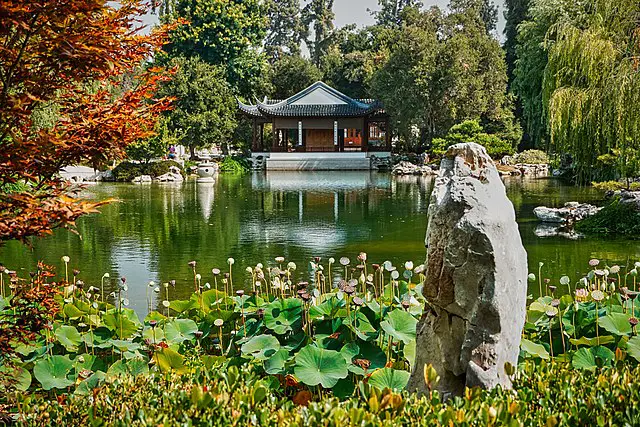
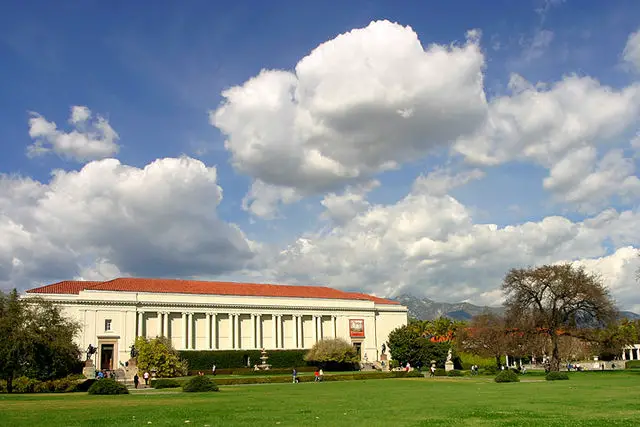
The world-famous treasures of the Huntington Library, Art Museum, and Botanical Gardens are shared with a variety of audiences to promote scholarship, encourage learning, spark creativity, and provide transformative experiences. Two art galleries, a library, and stunning collections of rare books and manuscripts, as well as American art from the late 17th to the middle of the 20th century, are housed among 120 acres of spectacular grounds that feature various botanical collections of more than 27,000 plant types. An Ellesmere copy of Chaucer’s The Canterbury Tales is on exhibit in the Huntington’s Library Exhibition Hall, where more than 1 million visitors from all around the world enjoy the museum each year and more than 1,700 researchers perform academic study among the extensive holdings. The Huntington Art Gallery is a stunning beaux arts structure that displays European treasures including Thomas Gainsborough’s The Blue Boy. It was formerly the private residence of the center’s founder, business mogul Henry E. Huntington, and his wife, Arabella. Showstoppers at the Virginia Steele Scott Galleries of American Art include Zenobia in Chains, a massive marble sculpture by Harriet Hosmer that is being shown for the first time in more than a century.
The property features the most renowned botanical gardens in California, along with lakeside seating areas decorated in Asian style. The protected grounds and lake are home to native creatures, making the location great for picnics and wildlife exploration. Visitors from all over the world are drawn here by the abundance of rare Californian, Chinese, and exotic plants, as well as special occasions like Veteran’s Day and expertly presented historical lectures.
Explore over 150 interactive exhibits in galleries like Ecosystems that include real creatures in living environments as you set off on a voyage of science learning and entertainment for everyone. See the Space Shuttle Endeavour to make your trip extraordinary. View the orbiter up close and learn about the science that underlies this remarkable machine. Watching an IMAX movie brings your all-day science adventure to a close. Although the Space Shuttle Endeavour is the California Science Center’s most well-known and well-attended display, it also holds a number of other permanent installations with a variety of themes. Live animals and a variety of interactive exhibits are included in Ecosystems. You can learn about the relationship that occurs between living beings and the environment they inhabit in this area. In Creative World, you explore the various discoveries and ideas throughout history while carrying out experiments that let you personally learn about some of the most significant scientific breakthroughs. Real aerospace artefacts may be found at the museum’s most visited section, Air and Space, where you can also marvel at the construction and functioning of various aircraft and spacecraft.The “tunnel of life” in The World of Life tackles exciting themes including energy, waste, reactions, defence systems, reproduction, and much more. It enables you to learn about the fundamental processes that all living things, including humans, plants, animals, and even bacteria, share.
The California Science Center’s star attraction is the Endeavour Space Shuttle, which is housed in the Samuel Oschin Pavilion. Space Shuttle Endeavour was launched for the first time in 1992 and has since completed 25 missions successfully and spent 299 days in space. Endeavour has also taken part in a number of historic missions, including the first mission to repair the Hubble Space Telescope and several trips to the International Space Station. Additionally, visitors have the option to learn more fascinating details like how a space toilet functions or the unique “kitchens” that astronauts use to prepare their dried meals. The California Science Center is a fascinating museum for all visitors, whether or not you’re travelling with children.
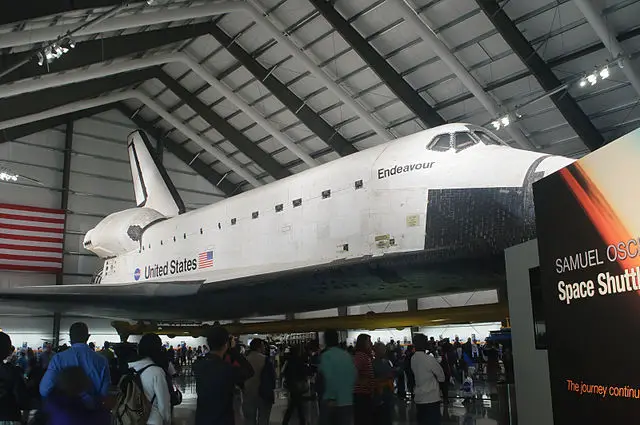
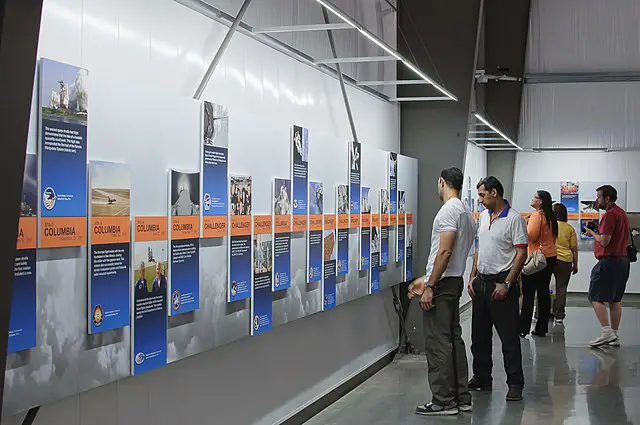

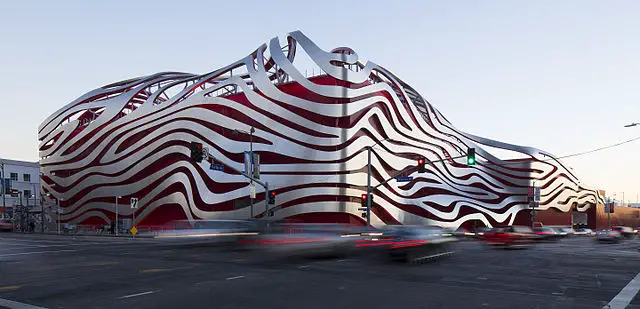
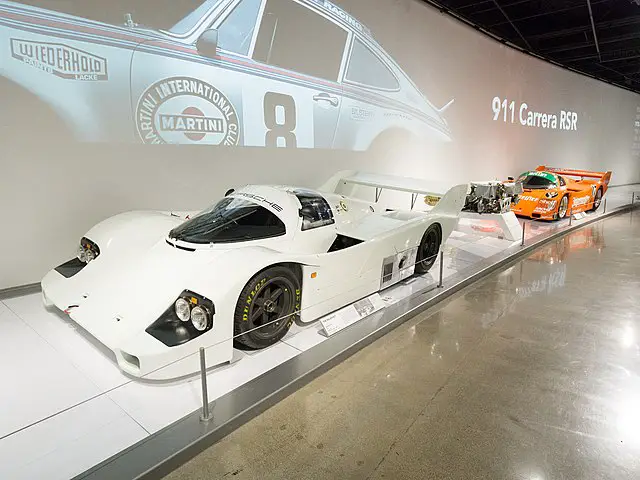
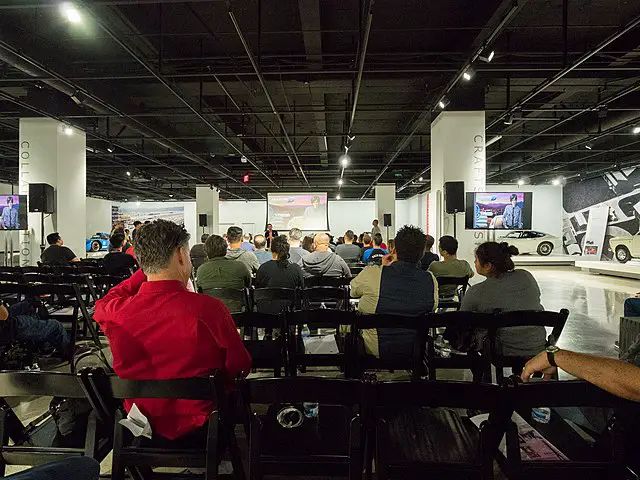

In the Miracle Mile area of Los Angeles, the Petersen Automotive Museum is situated on Wilshire Boulevard alongside Museum Row. The Petersen Automotive Museum, one of the biggest auto museums in the world, is a nonprofit with a focus on educational initiatives relating to auto history. The Petersen Automotive Museum was established on June 11, 1994, by magazine publisher Robert E. Petersen and his wife Margie. It is owned and run by the Petersen Automotive Museum Foundation.
The museum then relocated to a former department store created by Welton Becket after being housed within the Natural History Museum of Los Angeles County for a time. The structure was first used as a brief-lived American branch of Seibu Department Stores before being used from 1965 until 1986 as an Ohrbach’s department store. Robert Petersen chose the largely windowless location as the perfect location for a museum six years after Ohrbach’s closed because it would allow objects to be displayed without damaging exposure to direct sunlight.
The museum completed a comprehensive $125 million refurbishment in 2015.
The architectural company Kohn Pedersen Fox renovated the building’s façade, which includes a 100-ton stainless-steel ribbon assembly. The Scenic Route’s interior areas were designed to support shifting displays. The public could visit the renovated museum on December 7, 2015.
In the 25 halls of the museum, there are more than 100 automobiles on show. The building’s subterranean level contains a vault where the other half is housed. There are restrictions on the viewing of the vault collection based on age and a higher admission fee. The first floor showcases a variety of expensive cars, with the bottom floor focusing on automotive arts. Industrial engineering, comprising design, performance, and a selection of engaging instructional exhibits, takes up the majority of the second level. Racing, motorbikes, hot rods, and custom cars are all shown in special exhibits on the industry floor. The third level provides a history of the automobile with a focus on Southern California’s car culture. Take part in engaging, family-friendly exhibits.
